Career fog can feel like walking through a thick mist where every step forward seems uncertain. For ambitious professional women, particularly those juggling demanding careers with personal lives, this uncertainty often manifests as a persistent feeling that something isn’t quite right.
According to a recent Harvard Business Review study, 64% of professionals experience career uncertainty at some point in their journey, with women in leadership positions reporting higher rates of career dissatisfaction than their male counterparts.
The truth is, recognizing these feelings of misalignment isn’t a sign of failure – it’s actually the first step toward positive change. While the idea of pivoting careers might seem daunting, especially when you’ve invested years building your current position, understanding the clear signs of career misalignment can help you make informed decisions about your future.
Let’s outline three unmistakable signs that you’re climbing the wrong career ladder, along with practical strategies to help you pivot without compromising your financial stability. More importantly, we’ll show you how to transform career fog into career clarity.
Sign #1: Your Physical and Mental Health Are Suffering
Your body often recognizes career misalignment before your mind fully acknowledges it. Working in the wrong career significantly increases stress levels and can even lead to physical health issues. The most telling indicator appears in your daily physical and emotional responses to work. When you consistently wake up with a sense of dread, experience Sunday night anxiety, or notice persistent physical symptoms, your body is sending clear distress signals.
Common physical manifestations include:
- Chronic tension headaches
- Disrupted sleep patterns
- Digestive issues
- Unexplained fatigue
- Increased susceptibility to illness
Beyond these physical symptoms, your mental well-being offers equally important insights. Research from the American Psychological Association shows that workplace stress contributes to 120,000 deaths annually and results in $190 billion in healthcare costs.
Consider Sarah, a successful marketing executive who initially dismissed her persistent migraines and insomnia. “I thought pushing through exhaustion was part of climbing the corporate ladder,” she explains. “It wasn’t until my doctor pointed out the direct correlation between my symptoms and work stress that I realized something needed to change.”
The key difference between normal work stress and career misalignment lies in the persistence of these symptoms. While occasional stress is normal, chronic physical and mental health issues that improve during vacation time but quickly return when you’re back at work signal a deeper problem.
Remember, your well-being isn’t just a nice-to-have – it’s a fundamental indicator of career fit. When your work consistently compromises your health, it’s time to reassess your professional path.
Sign #2: You’re Disengaged and Uninspired
Professional disengagement goes deeper than having an occasional “off” day at work. According to Gallup’s latest report from January 2025, employee engagement in the U.S. has fallen to a 10-year low, with only 31% of employees overall being engaged in their work. This figure applies to both men and women.
Think of engagement as your professional energy meter. When you’re in the right career, challenges energize you rather than drain you. However, consistent disengagement manifests in several subtle yet significant ways:
- Your relationship with work has shifted from proactive to reactive. Instead of initiating projects or contributing ideas during meetings, you find yourself simply going through the motions. This behavioral shift often indicates a deeper disconnect between your work and your core values.
- Professional development opportunities no longer excite you. While your colleagues eagerly pursue additional certifications or new responsibilities, you feel indifferent about growth within your current field. This lack of enthusiasm about future opportunities often signals that you’re investing energy in the wrong direction.
- The quality of your work remains high, but the personal satisfaction has disappeared. As one client shared, “I was still meeting all my targets, but the sense of achievement I used to feel had completely vanished. Success felt hollow.”
Consider these reflection questions:
- Do industry conversations and innovations still spark your curiosity?
- When was the last time you felt genuinely proud of a work accomplishment?
- Does your current role utilize your natural talents and acquired skills effectively?
The distinction between temporary burnout and genuine disengagement lies in your capacity to envision positive change within your current career path. While burnout improves with rest and boundaries, true disengagement persists despite changes in workload or environment.
Sign #3: You Can’t Envision a Positive Future
When someone asks about your five-year career plan, does your mind go blank? Or worse, does the thought of continuing on your current path for another five years fill you with dread? According to career development experts, the inability to envision a fulfilling future in your current role represents one of the most reliable indicators of career misalignment.
This misalignment typically shows up in three key areas:
Values Disconnect
Your work increasingly conflicts with your personal values and beliefs. For instance, if you value creativity and innovation, but your role demands rigid adherence to established procedures, this fundamental mismatch creates constant internal tension.
Financial Ceiling
While compensation matters, a 2022 Career Pulse Survey by FlexJobs shows that 63% of respondents stated they would choose better work-life balance over better pay, while only 31% would choose better pay over work-life balance. If you can’t see opportunities for both financial and personal growth, you’re likely on the wrong path.
Impact Gap
Professional fulfillment often stems from the feeling that your work matters. When you struggle to connect your daily tasks to meaningful outcomes, it creates a significant purpose deficit.
The most telling question becomes: If money weren’t a factor, would you choose this career path again? Your immediate emotional response to this question often reveals more than lengthy analytical deliberation.
Remember, clarity about what you don’t want can be as valuable as knowing what you do want. This recognition creates space for exploring new possibilities that better align with your authentic professional aspirations.
Your Strategic Pivot Plan: Making Your Move Without Sacrificing Income
The prospect of career transition often triggers financial anxiety, but strategic planning can help you maintain stability while pursuing meaningful change. Let’s break down this process into actionable steps.
Financial Preparation First
Before making any moves, establish your financial foundation. Financial experts generally advise maintaining an emergency fund that covers three to six months of living expenses. Bankrate’s 2024 Annual Emergency Savings Report reveals that only 44% of Americans could afford to cover an expense of $1,000 or more from their savings. This highlights the importance of building a robust emergency fund before considering a career change.
The size of your emergency fund may vary based on individual circumstances. For those contemplating significant career changes, especially in their 40s or 50s, some experts suggest considering 6-12 months of expenses. This larger safety net can provide greater financial security during the transition period.
Having this financial cushion can indeed provide the mental space needed to make decisions from a place of empowerment rather than desperation. It allows you to weather potential income fluctuations or unexpected expenses during your career transition without immediately falling into financial distress.
Start with these essential steps:
- Create a detailed transition budget
- Identify non-essential expenses you can temporarily reduce
- Calculate your minimum required income
- Review your current benefits and their replacement costs
Building Your Bridge
Think of your career pivot like building a bridge while you’re still standing on solid ground. According to Harvard Business Review, successful career changers spend an average of 18 months preparing for their transition while maintaining their current position.
Focus on these key areas:
Skill Translation
Identify your transferable skills and any gaps you need to fill. For example, a marketing executive moving into tech sales can leverage their communication and strategic planning abilities while learning specific industry knowledge.
Network Expansion
Begin building connections in your target industry before you need them. LinkedIn data shows that 85% of jobs are filled through networking [Source: need to verify current LinkedIn statistics]. Consider joining professional associations, attending industry events, and connecting with potential mentors in your desired field.
Test Drive Your New Direction
Before making a full pivot, explore your new path through:
- Relevant side projects
- Volunteer work in your target field
- Part-time consulting
- Industry-specific courses or certifications
This approach allows you to validate your interest and build credibility while maintaining your current income stream.
Taking Control of Your Career
Taking control of your career direction doesn’t mean making reckless moves or sacrificing everything you’ve built. Instead, it’s about aligning your professional path with your authentic goals and values while maintaining financial stability.
Remember, career fog isn’t a permanent condition – it’s often a catalyst for positive change. By recognizing these three key signs and following a strategic pivot plan, you can navigate toward a more fulfilling professional future with confidence.
Start with small, intentional steps:
- Monitor your physical and emotional responses to work
- Document moments of engagement versus disengagement
- Begin building your financial safety net
- Explore potential paths through low-risk activities
Most importantly, understand that seeking a more aligned career path isn’t about running from something – it’s about moving purposefully toward work that energizes and fulfills you.
Your next step? Choose one action item from this article and implement it this week. Whether it’s starting an emergency fund or reaching out to someone in your target industry, small actions create momentum for meaningful change.
Emily Sprinkle, also known as Emma Loggins, is a designer, marketer, blogger, and speaker. She is the Editor-In-Chief for Women's Business Daily where she pulls from her experience as the CEO and Director of Strategy for Excite Creative Studios, where she specializes in web development, UI/UX design, social media marketing, and overall strategy for her clients.
Emily has also written for CNN, Autotrader, The Guardian, and is also the Editor-In-Chief for the geek lifestyle site FanBolt.com
- Emma Loggins Sprinklehttps://www.womensbusinessdaily.com/author/emma-loggins/
- Emma Loggins Sprinklehttps://www.womensbusinessdaily.com/author/emma-loggins/
- Emma Loggins Sprinklehttps://www.womensbusinessdaily.com/author/emma-loggins/
- Emma Loggins Sprinklehttps://www.womensbusinessdaily.com/author/emma-loggins/







